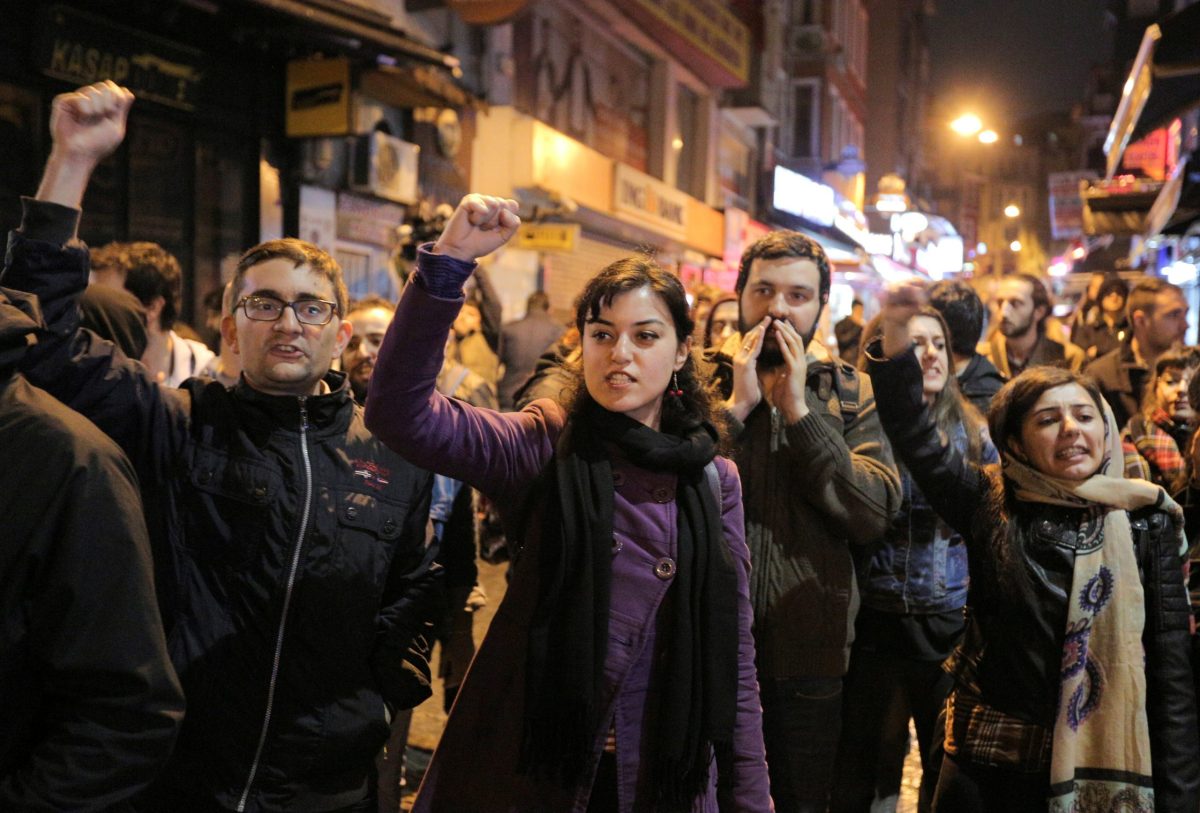[ad_1]
Turkey has a long history of pigeonholing women. Women who chose to cover their heads were labeled “backward†and uneducated while those who went uncovered represented the modern ideal of a woman bravely rejecting religious conservatism.
The headscarf symbolized the battle between the forces of modernity and arch-conservatism. But for a new generation of women, it is as much a political statement about their rights as about their religion.
Wearing the headscarf was banned in public institutions, including universities, in the early 1980s, but morphed into a women’s rights symbol in the 1990s and 2000s as Muslim women campaigned on university campuses all over Turkey for the right to wear it.
Often, the campaigners found themselves doubly isolated. Harassed by the secular authorities and denied public-sector jobs, the wider women’s movement also shunned them as a “single issue†regressive group.Â
The battle appeared to be won when President Recep Tayyip Erdogan and his Justice and Development Party (AKP) came to power in 2002. Veiled women had worked hard for the party, canvassing door-to-door, but it was another eight years before the ban on head coverings in universities was lifted.
Worse, the AKP took full credit for it, trivializing, denigrating or simply ignoring the part played by the many female activists who had striven for years to bring about that outcome.
And now the headscarf – and those who wear it – is again at the center of a protest movement.Â
For a long time, the AKP has viewed headscarf-wearing women as loyalists, and in truth, many were. The party is popular among a significant portion of religious women who credit the AKP for making it possible to live their faith openly and for legitimizing Islam as a central pillar of Turkish national identity. Many of these women fear losing those rights if Erdogan were no longer in power.Â
So it came as a shock to the party to see young, headscarf-wearing women protesting against the appointment in early January of an AKP member as rector of Boğaziçi University, Turkey’s most prestigious seat of learning.
Traditionally, rectors are chosen by teaching staff. Students, present and past, and academics alike decried the appointment of Melih Bulu, a former parliamentary candidate for the AKP, as an abuse of political power, an attack on academic freedom and further evidence of Turkey’s diminishing commitment to democracy.
Covered Muslim women were also among those defending a students’ art exhibition that featured a poster depicting Islam’s most sacred site surrounded by LGBT+ flags. Once praised for their piety, they found themselves recast by the authorities as un-Islamic, amoral, unpatriotic puppets of the West. The interior minister denounced them on Twitter as “deviants.â€
Sociologist Feyza Akinerdem, a BoÄŸaziçi graduate, summed up the reaction thus: “When a woman in a headscarf is visible or heard in a way that the patriarchy deems politically damaging to their cause, she is denigrated as morally corrupt or as failing her religion.â€
In reality, pious women in Turkey – as everywhere in the Middle East – have never been a homogenous bloc. The main opposition party, the secular Republican People’s Party (CHP), has religious women among its membership.
Muslim women took part in the protests against urban development plans for Istanbul’s Gezi Park in 2013 and some joined the left-wing group, Anti-Capitalist Muslims. No one paid them much attention then and things are no better now, they claim.
“I cannot breathe, my friends cannot breathe,†says Seyma Orhan, a literature student at BoÄŸaziçi. “We live in perpetual limbo where we don’t belong in either the government’s neighborhood or the secular neighborhood. We are in no-man’s-land.â€Â
Another student, Seyma Altundal, was arrested and handcuffed during the Bulu protest and claims she was not allowed to put her headscarf back on after it fell off.
News of her arrest exploded on social media and when she was released later the same day, she posed outside the courthouse making the peace sign with one hand and holding up the index finger of the other, signifying the indivisibility of God. She explained, “We are servants of Allah and not the state and we know Him as the only authority.â€
Recent years have seen the emergence of women’s groups and bloggers talking about the challenges of womanhood, motherhood and feminism from a Muslim perspective.
In December, the Havle Women’s Association, which claims to be the first Muslim feminist organization in Turkey, hosted an online conference on how Muslim identity is compatible with feminist goals. One of the speakers was Amina Wadud, an American Muslim theologian, known variously as the Lady Imam and the “rock star of Islamic feminists.â€
“The Muslim women’s movement evolving into a Muslim feminist movement has expanded the parameters of what is permissible for us to talk about and stand up for,†says Rümeysa Çamdereli, one of the founders of Havle.Â
Unlike the previous generation of women, who were forced to remove their headscarves if they wanted to work in the civil service, the young Muslim women of today demand the right to express their culture, their religiosity and their dissent. For them, their faith is not incompatible with speaking truth to unchecked political power.
They have also highlighted the need to keep an eye on the future. Turkey is a young country; more than 15% of the population is aged under 25.
It is difficult to gauge the influence this young generation of proudly headscarved women wields, but it is not negligible. As student Seyma Orhan put it, “We may not represent the majority of Muslim women in Turkey today, but we are also more than just a handful.â€
This article was provided by Syndication Bureau, which holds copyright.
[ad_2]
Source link













